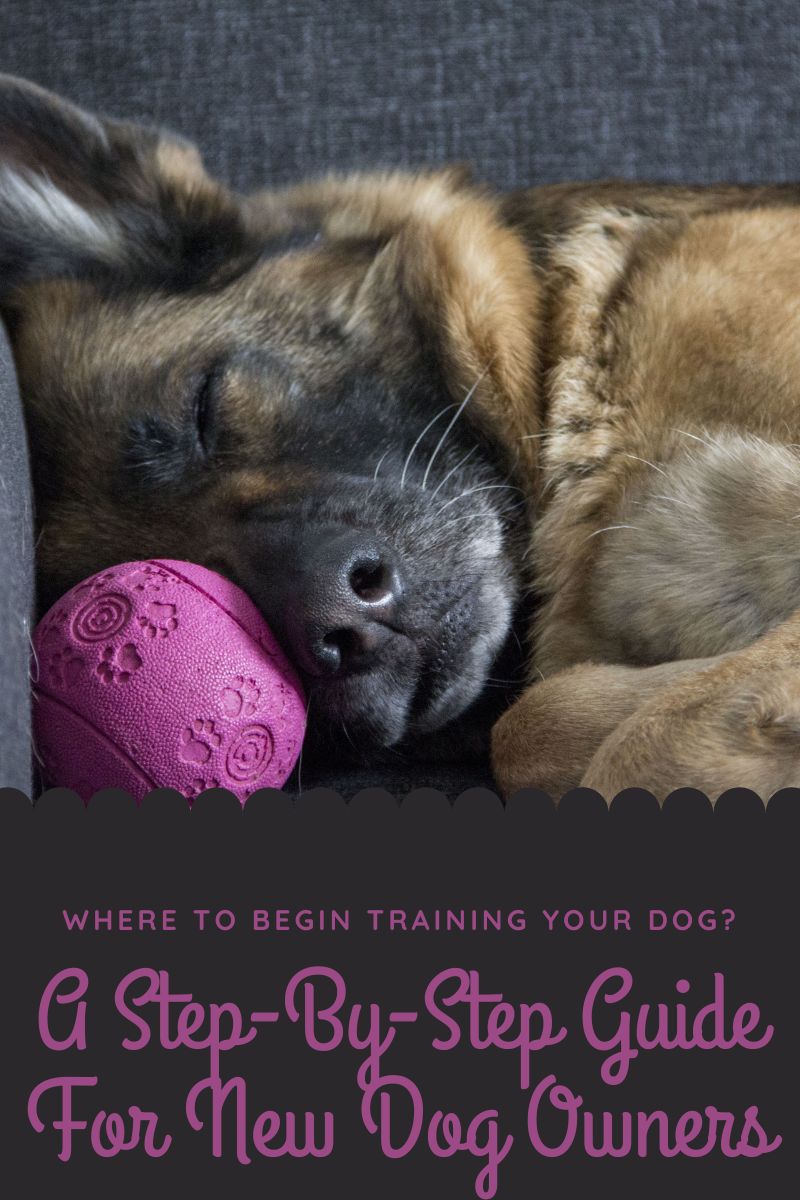When training a new dog, starting on the right paw is crucial.
Proper training establishes a strong bond between you and your furry friend but also helps teach good behaviors and manners.
If you’re wondering where to begin training a dog, you’ve come to the right place! This article will provide a step-by-step guide to help you start your dog training journey.

Step 1: Establish a Training Plan
The first step in training your dog is to create a training plan.
Decide the specific behaviors or commands you want to teach your dog, such as sit, stay, come, or leash walking.
Prioritize the essential controls and behaviors for your dog’s safety and well-being.
Make a list of these commands and create a timeline for training sessions.

Step 2: Create a Positive Learning Environment
Creating a positive learning environment is crucial for practical dog training.
Choose a quiet and distraction-free area for training sessions.
Use positive reinforcement techniques, such as treats, praise, and play, to motivate and reward your dog for desired behaviors.
Avoid using punishment or harsh training methods, as they can cause fear or anxiety in your dog, hindering the learning process.
Step 3: Start with Basic Commands
Begin your dog’s training with basic commands like sit, stay, and come.
Use simple and consistent verbal cues and hand signals to communicate with your dog. Start with short training sessions, around 5-10 minutes, and gradually increase the duration as your dog becomes more proficient.
Be patient and consistent in your training efforts, as every dog learns independently.

Step 4: Use Positive Reinforcement
Positive reinforcement is a powerful tool in dog training.
When your dog performs a desired behavior or follows a command, reward them immediately with treats, praise, or play.
This helps reinforce the behavior and motivates your dog to repeat it.
Use high-value treats and rewards to make your dog’s training sessions more enjoyable.
Step 5: Practice Consistency and Repetition
Consistency and repetition are essential to successful dog training.
Use the same commands, cues, and rewards consistently throughout training.
Avoid confusing your dog with mixed signals or changing the rules midway.
Practice the commands in different environments and gradually increase distractions to generalize the training.
Step 6: Gradually Add Challenges
Once your dog has mastered the basic commands, gradually add challenges to the training.
Introduce more complex orders, such as “leave it” or “heel,” and practice them in different situations.
Increase the duration, distance, and distractions to make the training more realistic and applicable to real-life scenarios.
Always set your dog up for success and progress at a pace that suits its needs.
Step 7: Incorporate Socialization and Enrichment
Socialization and enrichment are essential for dog training.
Expose your dog to different people, animals, and environments to help them become well-rounded and confident.
Offer mental and physical enrichment activities, such as puzzle toys, fetch, or scent games, to keep your dog mentally stimulated and engaged.
A well-socialized and mentally enriched dog is likelier to exhibit good behaviors and manners.
Step 8: Seek Professional Help if Needed
If you’re facing challenges in training your dog or displaying concerning behaviors, seeking professional help from a certified dog trainer or a veterinary behaviorist is essential.
They can assess your dog’s behavior, provide expert guidance, and tailor a training plan that suits your dog’s needs.
In conclusion, training a dog requires patience, consistency, and positive reinforcement.
By creating a training plan and providing a positive learning environment, starting with basic commands, using positive reinforcement, practicing consistency and repetition, gradually adding challenges, incorporating socialization and enrichment, and seeking professional help if needed, you can set your dog up for success in its training journey.
Remember to be patient; every dog is unique and learns quickly.
Celebrate small victories and progress; never punish or scold your dog for mistakes.
Training should be a fun and rewarding experience for you and your furry friend, strengthening your bond and fostering a lifelong relationship based on trust and mutual respect.
So, if you’re wondering where to begin training a dog, follow this step-by-step guide and embark on an exciting journey of shaping your dog into a well-behaved and obedient companion.
With dedication, consistency, and positive reinforcement, you’ll see your dog blossom into a well-trained and happy family member.
Conclusion and FAQs
Remember, a well-trained dog is a happy and confident dog, and investing time and effort into their training will result in a lifetime of companionship and joy.
So, grab those treats, put on your patient hat, and embark on the fulfilling adventure of training your furry companion.
The essential basic cues to teach a puppy include “come,” “sit,” “stay,” “down,” and “go to their crate”[1][2]. These commands are essential for basic obedience and help keep your puppy safe and well-behaved. Other important cues include “leave it,” “drop it,” and “heel”[3]. Consistency and positive reinforcement are essential when training a puppy, and short, repetitive training sessions are recommended[4]. It’s critical to be patient and to end each session on a positive note[2]. Teaching your puppy basic cues can be fun and rewarding and help build a strong bond between you and your furry friend[5].
The best way to reinforce good behavior in a puppy is through positive reinforcement[1][2][3]. Positive reinforcement involves rewarding your puppy for good behavior with treats, praise, or playtime rather than punishing them for bad behavior[1]. This method helps to build a strong bond between you and your puppy and encourages them to repeat good behavior in the future[2]. It’s essential to be consistent with positive reinforcement and to reward your puppy immediately after they exhibit good behavior[3]. Treats should be enticing and irresistible to your puppy, and you can experiment to see which goodies work best[3]. Other ways to encourage good behavior in puppies include teaching them basic commands, discouraging barking and jumping, and providing plenty of exercises and mental stimulation[4].
Happy training!
